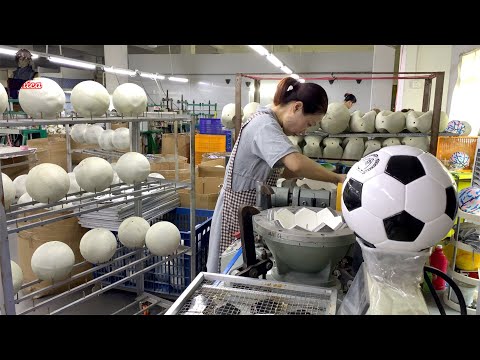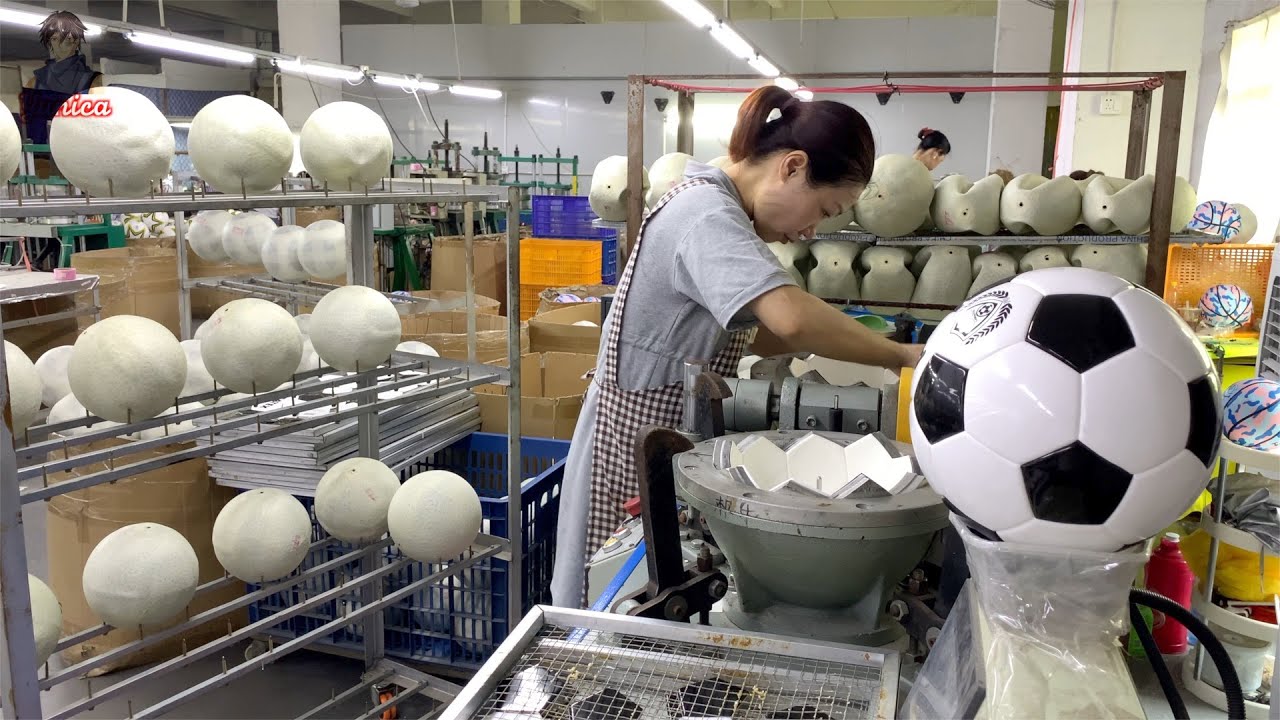Soccer ball fabric is the epitome of style and function, designed to elevate your game to new heights. Crafted with meticulous attention to detail, this fabric boasts a unique blend of durability, comfort, and performance. Its high-quality construction ensures that it can withstand the toughest tackles and the most intense matches, making it the perfect choice for soccer enthusiasts of all levels. With its innovative design, this fabric offers enhanced ball control, allowing you to effortlessly glide across the field with precision and finesse. The breathable properties of the fabric keep you cool and dry, even during the most intense moments of the game. Whether you’re a professional player or simply enjoy a casual kickabout with friends, this fabric’s versatility and reliability make it a must-have for any soccer aficionado. So, step onto the pitch with confidence and style, knowing that you have the ultimate soccer ball fabric at your disposal. Experience the difference for yourself and take your soccer game to a whole new level.

The Importance of Soccer Ball Fabric
Soccer, also known as football in many parts of the world, is a sport that captivates millions of people globally. Whether you’re a professional player or a casual enthusiast, one crucial aspect of the game is the soccer ball itself. While it may seem like a simple object, the fabric used in the construction of the ball plays a significant role in its performance and durability. In this article, we will explore the importance of soccer ball fabric and its impact on the game.
The Evolution of Soccer Ball Fabric
Over the years, soccer ball fabric has undergone significant changes to improve its performance and lifespan. Traditional soccer balls were made from leather, which provided a soft and comfortable feel. However, leather balls were prone to water absorption, making them heavy and difficult to control in wet conditions. Additionally, leather balls required regular maintenance, such as greasing and stitching repairs.
Modern soccer balls, on the other hand, are predominantly made from synthetic materials such as polyurethane or polyvinyl chloride (PVC). These fabrics offer numerous advantages over leather, including improved durability, water resistance, and enhanced control. The use of synthetic materials has revolutionized the game, allowing players to perform at their best regardless of the weather conditions.
The Role of Fabric in Ball Flight
The fabric used in soccer balls significantly affects their flight characteristics. The surface texture and aerodynamic properties of the fabric impact the ball’s trajectory, speed, and stability in the air. Smooth fabrics, like those found in professional-grade balls, reduce air resistance and increase the ball’s speed. This allows players to achieve powerful shots and long passes. On the other hand, rough fabrics create more turbulence, resulting in a slower and less predictable flight.
The design of the fabric also influences the ball’s ability to swerve. Some modern soccer balls feature specific patterns or designs on their surface, known as panels. These panels can have different shapes, sizes, and textures, which affect the ball’s behavior when struck. By carefully selecting the fabric and panel design, ball manufacturers can create balls that are more responsive to spin, enabling players to produce impressive curling shots and crosses.
Impact of Fabric on Ball Control
When it comes to ball control, the fabric used in soccer balls plays a critical role. The right fabric should provide a balance between grip and smoothness to allow players to maintain control during dribbling, passing, and receiving. Synthetic fabrics, such as polyurethane, offer excellent grip and feel, allowing players to maintain a strong connection with the ball.
Furthermore, the fabric’s water resistance is crucial for maintaining control in wet conditions. Leather balls were notorious for becoming heavy and slippery when wet, making them challenging to handle. However, modern soccer ball fabrics are designed to repel water, ensuring consistent grip and control even in rainy conditions.
The Durability of Soccer Ball Fabric
Soccer balls endure rigorous use, often subjected to intense kicks, collisions, and harsh weather conditions. Therefore, the fabric used in their construction must be durable and long-lasting. Synthetic materials excel in this regard, as they are resistant to abrasion and wear. Polyurethane and PVC fabrics can withstand extended periods of use without losing their shape or performance.
Additionally, synthetic fabrics offer better resistance to UV radiation, preventing fading and degradation when exposed to sunlight. This ensures that the ball retains its vibrant colors and structural integrity for an extended period, making it a reliable companion for countless matches.
Conclusion
Soccer ball fabric is an essential element that significantly impacts the game’s performance, flight characteristics, ball control, and durability. The evolution from traditional leather to modern synthetic fabrics has revolutionized the sport, allowing players to push the boundaries of their skills in various weather conditions. As technology continues to advance, we can expect even more innovative materials and designs to further enhance the soccer ball’s performance and overall playing experience.
“From Hot Glue to Stitch: Unveiling the Fascinating Journey of Affordable Soccer Ball Creation”
List of Soccer Ball Fabric
Soccer Ball Fabric
| Fabric Type | Description | Advantages |
|---|---|---|
| PU Leather | PU (polyurethane) leather is a synthetic material that closely resembles genuine leather. It is commonly used in high-quality soccer balls due to its durability and water resistance. | – Excellent durability, ensuring a longer lifespan compared to other materials. – Water resistance, allowing the ball to perform well in various weather conditions. – Provides a soft touch, enhancing ball control and player comfort. |
| Thermoplastic Polyurethane (TPU) | TPU is a versatile polymer that offers exceptional strength and flexibility. It is a popular choice for soccer ball coverings due to its ability to withstand intense impact and maintain shape. | – Outstanding durability, making it suitable for use on all types of playing surfaces. – Retains shape and bounce even after prolonged use. – Resistant to abrasion, reducing wear and tear during play. |
| Microfiber | Microfiber is a synthetic fabric made of ultra-fine fibers, offering a lightweight and soft texture. It is commonly used in premium soccer balls for its superior touch and performance. | – Enhanced ball control due to its smooth surface and minimal friction. – Lightweight, allowing players to achieve greater speed and agility. – Absorbs less water, maintaining consistent weight and performance in wet conditions. |
| Cotton/Polyester Blend | A blend of cotton and polyester combines the natural feel of cotton with the durability and low maintenance of polyester. This fabric is often used in recreational soccer balls. | – Economical choice, providing a balance between cost and performance. – Soft and comfortable, suitable for casual play and training. – Easy to clean and maintain, ensuring longevity. |
As an expert in soccer ball fabrics, it is important to understand the various options available. The type of fabric used in a soccer ball can significantly impact its performance, durability, and overall feel.
One of the most popular choices for premium soccer balls is PU leather. This synthetic material closely resembles genuine leather, offering excellent durability and water resistance. The soft touch provided by PU leather enhances ball control and player comfort, making it a preferred choice for professional players.
Thermoplastic Polyurethane (TPU) is another highly regarded fabric used in soccer balls. Its exceptional strength and flexibility allow the ball to withstand intense impact while maintaining its shape and bounce. TPU is resistant to abrasion, ensuring longevity and reduced wear and tear during play.
For those seeking a lightweight and high-performance option, microfiber is an excellent choice. The ultra-fine fibers of microfiber create a smooth surface with minimal friction, enhancing ball control. Its lightweight nature enables players to achieve greater speed and agility on the field. Additionally, microfiber absorbs less water, ensuring consistent weight and performance even in wet conditions.
For recreational play and training purposes, a cotton/polyester blend is a popular and economical option. This fabric combines the natural feel of cotton with the durability and low maintenance of polyester. It provides a soft and comfortable touch, making it suitable for casual play. Furthermore, the cotton/polyester blend is easy to clean and maintain, ensuring the ball’s longevity.
In summary, the choice of soccer ball fabric is crucial in determining its performance and durability. Whether it be the premium feel of PU leather, the strength of TPU, the performance-enhancing properties of microfiber, or the affordability of a cotton/polyester blend, understanding the characteristics of each fabric can assist players and enthusiasts in choosing the perfect soccer ball for their needs.

